Gymnosperms
Gymnosperms are a group of seed-producing plants that includes conifers, cycads, Ginkgo, and gnetophytes. They are characterized by the presence of naked seeds, which are not enclosed within an ovary or fruit.
Characteristics of Gymnosperms:
- Seeds: Gymnosperms produce seeds that are not enclosed within a fruit. The seeds are typically found on the surface of cone scales.
- Cones: Most gymnosperms reproduce using cones. Male cones produce pollen, while female cones contain ovules that develop into seeds.
- Needle-like or scale-like leaves: Gymnosperms often have needle-like or scale-like leaves, which help reduce water loss and protect them from harsh environmental conditions.
- Woody stems: Gymnosperms have woody stems that provide structural support to the plant.
Examples of Gymnosperms:
Some common examples of gymnosperms include:
- Conifers: This group includes pines, spruces, firs, and cedars.
- Cycads: Cycads are palm-like plants with large compound leaves and stout trunks.
- Ginkgo: Ginkgo biloba is a unique gymnosperm with fan-shaped leaves.
- Gnetophytes: This group includes three genera: Gnetum, Welwitschia, and Ephedra.
Importance of Gymnosperms:
Gymnosperms play a crucial role in the ecosystem and have economic importance as well. They are a source of timber, paper, resins, and medicinal products. Additionally, they contribute to the global carbon cycle and provide habitats for various organisms.
Study Guide:
When studying gymnosperms, it's important to focus on the following key points:
- Understanding the unique reproductive structures of gymnosperms, such as cones and naked seeds.
- Recognizing the different groups of gymnosperms and their distinguishing characteristics.
- Exploring the ecological and economic significance of gymnosperms.
- Comparing the life cycles of gymnosperms with those of other plant groups, such as angiosperms.
- Identifying specific examples of gymnosperms and their adaptations to various environments.
By mastering these concepts, you can develop a comprehensive understanding of gymnosperms and their importance in the natural world.
[Gymnosperms] Related Worksheets and Study Guides:
.◂Biology Worksheets and Study Guides High School. Introduction to animals
Worksheet/Answer key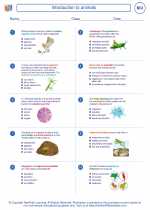 Introduction to animals
Introduction to animals  Worksheet/Answer key
Worksheet/Answer key Introduction to animals
Introduction to animals  Worksheet/Answer key
Worksheet/Answer key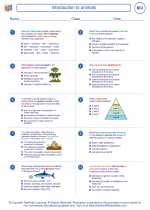 Introduction to animals
Introduction to animals  Worksheet/Answer key
Worksheet/Answer key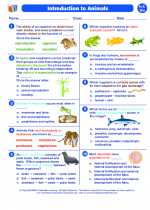 Introduction to animals
Introduction to animals  Vocabulary/Answer key
Vocabulary/Answer key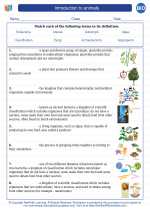 Introduction to animals
Introduction to animals  Vocabulary/Answer key
Vocabulary/Answer key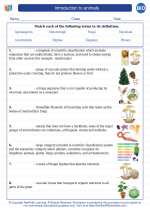 Introduction to animals
Introduction to animals  Vocabulary/Answer key
Vocabulary/Answer key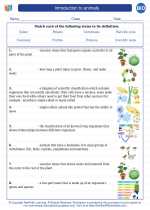 Introduction to animals
Introduction to animals 

 Worksheet/Answer key
Worksheet/Answer key
 Worksheet/Answer key
Worksheet/Answer key
 Worksheet/Answer key
Worksheet/Answer key
 Vocabulary/Answer key
Vocabulary/Answer key
 Vocabulary/Answer key
Vocabulary/Answer key
 Vocabulary/Answer key
Vocabulary/Answer key

The resources above cover the following skills:
Concepts of Life Science (SC1, SC2, SC3)
The student demonstrates an understanding of the structure, function, behavior, development, life cycles, and diversity of living organisms by describing the structure-function relationship